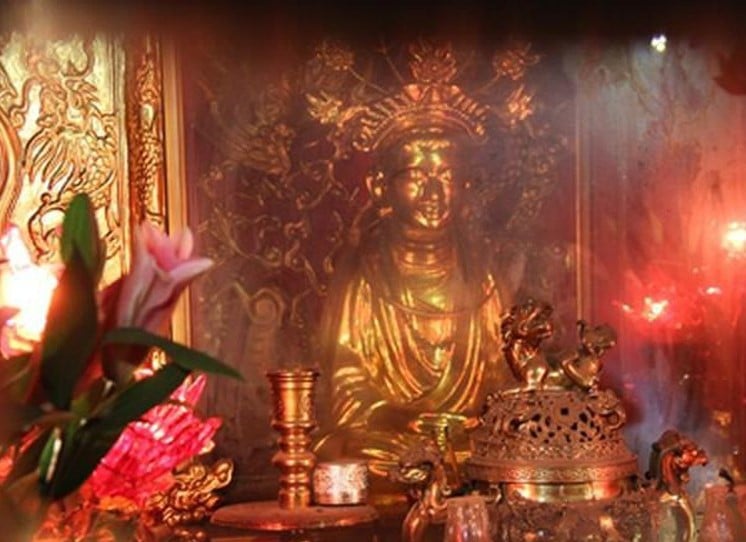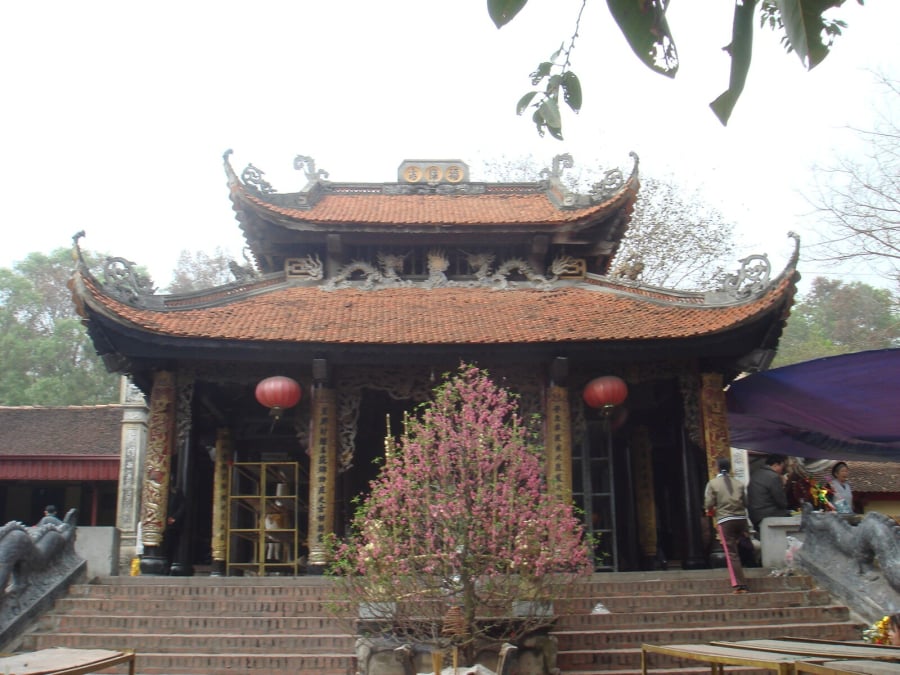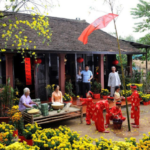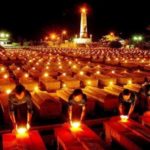Every year in January, starting from the 10th day, the Den Ba Chua Kho, located in Co Me village, Vu Ninh ward, Bac Ninh city, Bac Ninh province, becomes a destination for many tourists from all over. They come here with the desire to seek fortune, luck, and prosperity for their lives. Although each person who comes here has their own prayers, the story of Ba Chua Kho – the goddess worshipped in the temple – is understood and interpreted differently by each person. So what is the truth about Ba Chua Kho?
The province of Bac Ninh, famous for its many Ba Chua Kho temples, attracts thousands of visitors every year. These places of worship include Co Me village in Vu Ninh ward, Qua Cam village in Hoa Long commune, Thuong Dong village in Van An ward, and Ha Dong village in Tien Du district. Not only that, not far from there, in Trung Dong village, Viet Yen district, Bac Giang province, there is also a Ba Chua Kho temple.
According to the legends of each village, Ba Chua Kho is believed to have originated from Ba Chua Qua Cam (also known as Ba Chua Lam), the third queen of King Tran Anh Tong. The villages usually hold the main festivals on the 10th day of the first lunar month and the 15th day of the eighth lunar month. In particular, at the Ba Chua Kho temple in Co Me village, the main commemoration takes place on the 12th day of the first lunar month.
Since the 1980s, the Ba Chua Kho temple has become an annual pilgrimage site for hundreds of thousands of people from all over. They come here to perform special rituals such as “borrowing money,” “repaying money,” and “paying interest.”

Ba Chua Kho is not only worshipped in Bac Ninh and Bac Giang, but also honored in many other localities such as Hanoi, Nam Dinh, Hung Yen, Thai Binh… However, the roles and reverence for the goddesses vary. For example, at the Giong Vo communal house in Hanoi, people worship Quan Truong Quoc Kho Ly Thi Chau Nuong; at historical sites such as Cot Co Temple, Nguyen Thuong Temple, Bong Lai Temple in Nam Dinh city, people honor Bach Hoa, an exemplary princess; on Dien Bien III street, Hung Yen city, people worship Le Bach Nuong, a meritorious court lady; and in Lai village, Hung Ha district, Thai Binh province, people honor Ba Chua Ngu Tran Thi Dung.
The Ba Chua Kho goddesses, the historical figures worshipped in Hanoi, Nam Dinh, Hung Yen, and Thai Binh, have left a deep impression on the people. They have made great contributions in protecting the country’s reserves and weapons during difficult periods of resistance against invasion. After their deaths, they were honored and worshipped by the people as auspicious deities, symbolizing wealth and luck.
The Ba Chua Kho temple in Co Me village, famous and widely known, is a place of worship for a historical figure closely related to Kho Mountain. According to the legend, this is where the wealth, food, and weapons of the Ly dynasty were stored during the war against the Song dynasty. Ba Chua Kho, in a simplified understanding, is the caretaker of Kho Mountain. Meanwhile, Ba Chua Qua Cam and Ba Chua Lam, although not related to the role of guarding the reserves, are still honored by the people as Ba Chua Kho.

Mysterious spiritual stories
When she passed away, the people built a temple to commemorate her great contributions in caring for the people. This work was recognized and recorded by the feudal dynasty through the title “Owner of Spiritual Hardship” – the sacred Ba Chua Kho temple with 19th-century architecture, built in the shape of the letter “T” with exquisite carvings.
In the early 20th century, the French started construction of the Indochina Paper Factory on Kho Mountain. This was a large-scale project that occupied almost the entire mountain area. The French owner Beto ordered the destruction of the ancient temple to make way for the factory. However, strong opposition from the people of Co Me village posed obstacles to this plan. Despite the French building high walls and implementing strict security measures, the elderly people found ways to climb in, determined to protect the ancient temple with their own bodies.
In an attempt to destroy the temple, Beto faced an unexpected incident when his wife suddenly suffered severe abdominal pain. Despite summoning skilled doctors and trying various methods from medication to injections, the pain did not diminish. In this difficult situation, a worker from Co Me village suggested organizing a ritual in the temple. Not knowing what else to do, Beto agreed. A miracle happened when right after the ritual, Beto’s wife’s abdominal pain disappeared. In the face of the sacredness of the temple, Beto decided not to destroy it anymore. Instead, he had a small concrete road built from the factory gate leading to the temple, allowing the people to freely worship and pay their respects.

The Ba Chua Kho temple, a non-prominent architectural work, mainly reconstructed in the 1990s, is famous for its wealth of offerings – something few places can match. Although the “borrowing – repaying” money is just a symbolic gesture, its value can reach hundreds of millions of Vietnamese dong. According to popular belief, having extravagant offerings to please the divine spirits can bring practical profits with the expense already incurred. In the end, all offerings are burned to ashes and sent to the residence of the deities.
Not only a place for offering and seeking fortune, wealth, this area is also a convergence point for intimate gatherings, allowing people to admire the beauty of the temple and visit famous historical and cultural relics in the area, including Co Me communal house, ancient citadel of Bac Ninh, Bac Ninh Confucius Temple, and ancient streets. At the same time, visitors also have the opportunity to enjoy the traditional local specialties, imbued with traditional flavors.
Explore 12 Amazing Destinations for Biking Trips
Unlock Vietnam in a brand new way with an exciting biking tour! Discover the stunning beauty of the country with Dien May XANH’s top 12 must-see destinations. From sweeping plains to clear blue beaches and mountainous vistas – experience all the sights with your own personal cycling tour. Find your ideal route and set out for an adventure today!






































